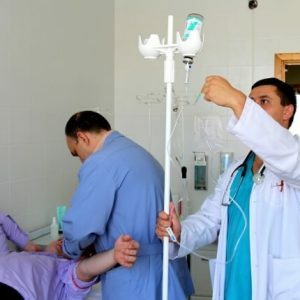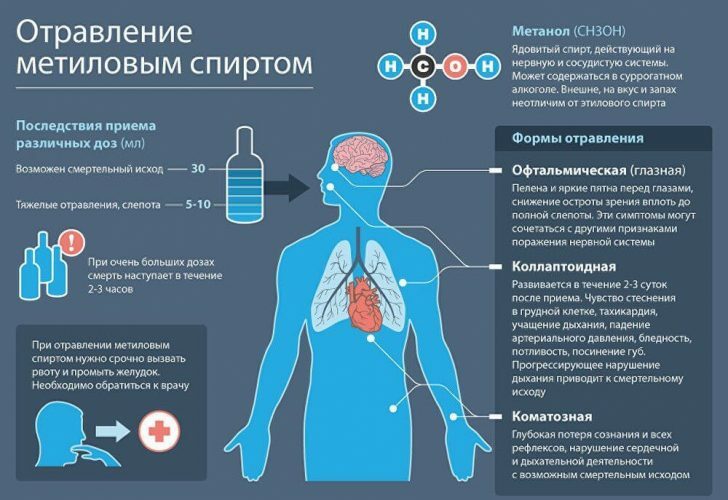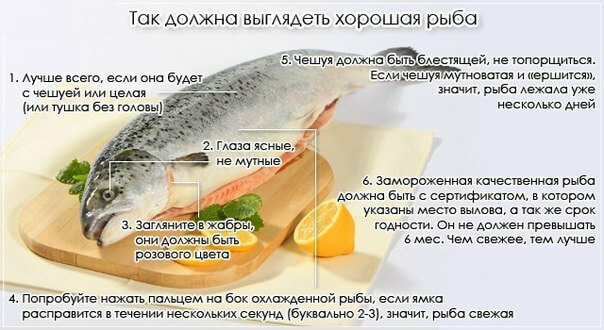First aid for heat shock
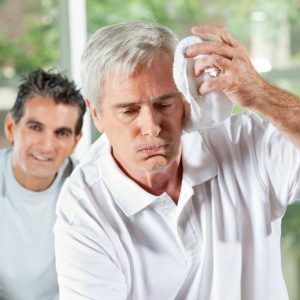
Heat shock is an acute pathological condition characterized by rapid development with an increase in symptoms.It is due to the general critical overheating of the body.A sunstroke is a direct consequence of prolonged and( or) very intense exposure to solar radiation on the unprotected surface of the head.
Note: sunstroke( apoplexia solaris) in the official medicine is designated by the term "helioz".
At a high ambient temperature, it becomes difficult for the human body to maintain a stable body temperature.Gradual decrease in the ability to normal thermoregulation leads to serious disturbances.In people with chronic cardiovascular pathologies, hyperthermia can cause severe consequences.In particular, cardiac arrest is not excluded.
Contents: Why heat stroke develops?Symptoms of heat stroke Diagnostics First aid for thermal shockWhy does heat stroke develop?
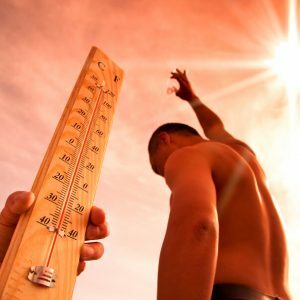 Overheating of the body is often the result of significant physical exertion.This state often develops against the background of active dynamic exercises.Heat stroke is also possible in people whose professional activity is related to staying in a hot and stuffy room( for example - a hot shop).
Overheating of the body is often the result of significant physical exertion.This state often develops against the background of active dynamic exercises.Heat stroke is also possible in people whose professional activity is related to staying in a hot and stuffy room( for example - a hot shop).
"Classic" heat stroke is more often diagnosed in children and the elderly with a sufficiently long stay outdoors( including in transport) in hot weather.
Note : The pathological condition caused by hypertension is not uncommon among visitors to baths and saunas.
At high ambient temperatures, the volume of sweat released increases.Moisture, evaporating from the surface of the skin, provides cooling of the body.At one hour a person can lose up to 1 liter of liquid with sweat( with normal functioning of the glands).
Factors on which the level and efficacy of sweating depends:
- air temperature;
- humidity of air;
- condition of skin and sweat glands;
- individual ability of the body to adapt;
- level of fluid consumption.
In case of non-compliance with the drinking regime( inadequate low fluid intake), dehydration( dehydration) gradually develops, resulting in sweating is reduced.
Recommended to read:Important: a person needs to drink at least one and a half liters of liquid a day( preferably pure water).In hot weather, and with increased physical exertion, it is recommended to increase the intake to 2.5-3 liters per day.
A significant loss of fluid can be the result of taking diuretic drugs, as well as coffee and alcoholic beverages, which also have diuretic properties.
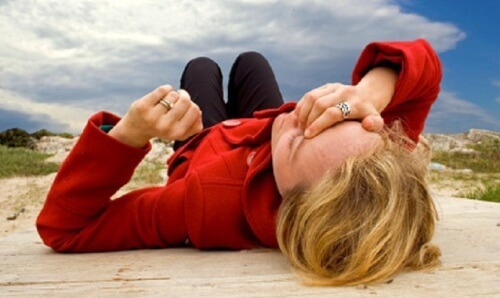 Increased sweating with insufficient fluid intake leads to disruption of the water-electrolyte balance and blood thickening.Deterioration of the rheological properties of blood becomes a cause of difficulty in blood circulation and hypoxia of tissues and organs.
Increased sweating with insufficient fluid intake leads to disruption of the water-electrolyte balance and blood thickening.Deterioration of the rheological properties of blood becomes a cause of difficulty in blood circulation and hypoxia of tissues and organs.
Surplus heat of the body is able to secrete by expanding the peripheral blood vessels.
If a person who has received a heat stroke does not provide timely and adequate care, complications of the condition can pose a significant threat to health and even life.
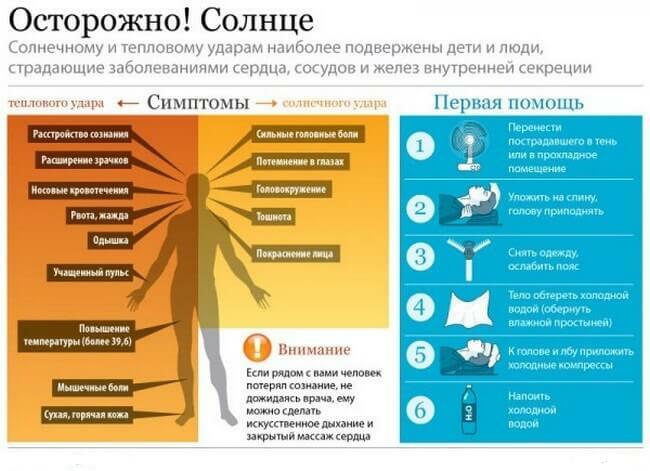
Note: thermal shock, which develops against the background of active physical activity, is much more likely to cause serious complications, compared with the pathological condition resulting from prolonged sun exposure.
Symptoms of heat stroke
In case of overheating, the following clinical forms of heat stroke may occur:
- hyperthermic;
- asphysical;
- cerebral;
- gastroenteric.
The main manifestation of the hyperthermic variety is the high( pyretic) body temperature of the victim reaches 40-41 ° C.
With the asphyxic form of heat stroke, the dominant clinical symptom is the impairment of the respiratory function.The patient's body temperature is within the limits of febrile values (38-39 ° C).
The cerebral variety is characterized by a predominance of neuropsychiatric disorders.
In the gastroenteric form of heat stroke, digestive functions( dyspeptic disorders) are at the forefront.
This pathological condition develops a rather characteristic symptomatology.
Clinical manifestations of heat stroke are:
- weakness;
-
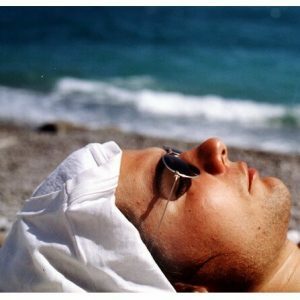 hyperemia and increased skin temperature( due to the expansion of peripheral vessels);
hyperemia and increased skin temperature( due to the expansion of peripheral vessels); - sharp pressure drop;
- skin dryness;
- rapid breathing, shortness of breath;
- dizziness;
- dilated pupils;
- intense headache;
- darkening or "flies" before the eyes;
- nausea;
- vomiting;
- diarrhea( not always);
- weak heart rate;
- increase in the heart rate to 130 beats / min.And more( tachycardia);
- myalgia( muscle pain);
- muscle spasms;
- sleep disorders( increased drowsiness or insomnia);
- confusion( not always).
For severe cases:
- loss of consciousness;
- disorientation in space;
- delirium;
- psychomotor agitation;
- appearance of seizures;
- hallucinations;
- cyanosis( cyanosis of the skin);
- bleeding in the organs of the digestive tract.
It is not excluded also involuntary defecation and urination.
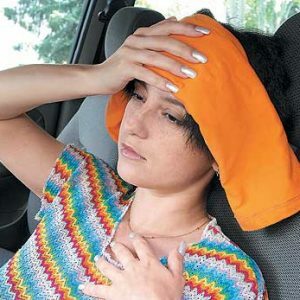 In some cases, the development of hepatic insufficiency, manifested by encephalopathy, jaundice and hypoglycemia.Some victims of heat stroke have acute symptoms of kidney damage, which are characterized by a change in the color of urine and a marked decrease in diuresis.
In some cases, the development of hepatic insufficiency, manifested by encephalopathy, jaundice and hypoglycemia.Some victims of heat stroke have acute symptoms of kidney damage, which are characterized by a change in the color of urine and a marked decrease in diuresis.
Occasional complications such as increased intracranial pressure and epileptiform seizures are noted.
With a sunstroke, the same clinical manifestations develop as with classical thermal, but the symptoms are more pronounced.Sunny stroke is more often in children.
Diagnosis
The diagnosis is usually not difficult even for young specialists.The doctor or paramedic diagnoses on the basis of anamnesis, the general condition of the victim and the presence of individual clinical manifestations.
Pathologies with which differential diagnosis is performed:
- encephalopathy( uremic or hepatic);
- meningitis;
- alcohol delirium( "white fever");
- hyperthyroidism( thyroid disease);
- tetanus;
- cocaine poisoning.
First aid for thermal shock
At the first signs of heat( solar) impact, you need to call an ambulance crew or transport the victim to the nearest hospital.
First aid
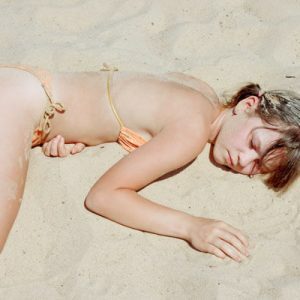 First of all, you need to cool the body and make up for the volume of liquid( give a drink of cool clean water).The patient needs to be moved to the shade and provide him with peace.If a person feels weak and nauseous, his body should be placed in a horizontal position( lying on his back with raised legs), but if vomiting has begun, it is necessary to turn him sideways to avoid aspiration vomit.To the head( in the frontal and occipital region) should apply cold compresses.
First of all, you need to cool the body and make up for the volume of liquid( give a drink of cool clean water).The patient needs to be moved to the shade and provide him with peace.If a person feels weak and nauseous, his body should be placed in a horizontal position( lying on his back with raised legs), but if vomiting has begun, it is necessary to turn him sideways to avoid aspiration vomit.To the head( in the frontal and occipital region) should apply cold compresses.
Clothing that can restrain breathing should be removed or unfastened.
Important: , if you have a driver's first aid kit at hand, it is advisable to use special hypothermic packages instead of compresses.
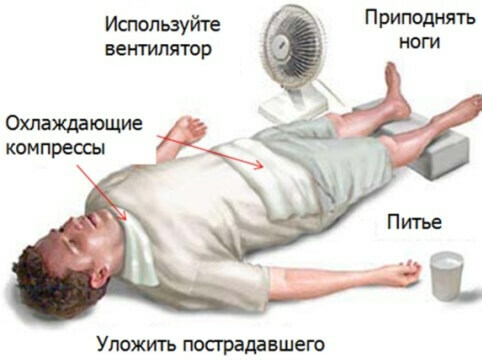
If there is such an opportunity, it is advisable to place the patient in a room equipped with air conditioning and wrap his whole body with a wet sheet.Rapid cooling can be achieved by wiping with alcohol, vodka or ether.
Important: the usual antipyretic agents( paracetamol and acetylsalicylic acid) for hyperthermia against a heat shock are ineffective.On the contrary, they can be dangerous, since they create an additional burden on the liver.
In the room, the patient needs to provide fresh air for additional cooling and breathing.If possible, it is recommended to periodically pour the body with cool water( 17-20 ° C), and if the general condition allows the victim to move, then you can put it in a cold bath( you can even add ice to the water).If there is confusion or loss of consciousness, you need to breathe in a couple of ammonia.
In case of cardiac arrest, it is necessary to immediately start an indirect heart massage and make artificial respiration to the victim.
Practice tactics
In most cases, the patient is hospitalized.When breathing is stopped and acute violation of cardiac activity, a complex of resuscitation measures is carried out.
Patient is given intravenous infusion of chilled saline to reduce body temperature and eliminate dehydration.
Important: if adequate assistance is not provided to the victim within an hour after the appearance of a characteristic symptomatics, irreversible processes can begin in the body.The defeat of the nervous system often leads to disability of the patient.
To stimulate cardiac activity, inject a solution of caffeine-benzoate sodium( 10%, 1 ml subcutaneously).Intravenously injected 30-40 ml of 10% glucose solution.In respiratory distress, intramuscular injection of the reflex action stimulant lobeline hydrochloride( 1%, 0.5 ml) is indicated.
In severe cases, after stabilization of the patient's condition, a number of tests and additional studies are performed to avoid possible complications.The patient is referred for analysis of blood, urine and liquor.To detect possible damage to the central nervous system, CT or MRI is performed.An electrocardiogram is assigned to assess the condition of the heart.
Risk groups
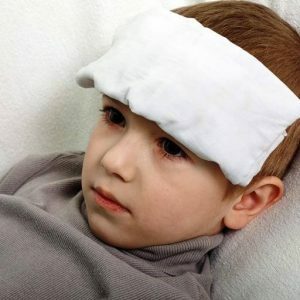 Thermal( solar) shock is the greatest danger for young children, because they do not have a perfect system of thermoregulation of the body.Severe consequences( up to a lethal outcome) can develop in people with pathologies of the cardiovascular system.
Thermal( solar) shock is the greatest danger for young children, because they do not have a perfect system of thermoregulation of the body.Severe consequences( up to a lethal outcome) can develop in people with pathologies of the cardiovascular system.
Persons with dermatological diseases are also at risk.With extensive skin lesions, the functional activity of sweat glands is often reduced.The probability of overheating is higher in people with excess weight( obesity), as well as in persons suffering from diseases of the endocrine system( in particular, the thyroid gland).
Note: , some experts predict an annual increase in the number of heat stroke cases due to global warming.
Prevention of thermal shock
To prevent the development of this acute condition, work should be done in a room with good ventilation.If it is necessary to stay in a high temperature for a long time, periodic dousing, wiping or a cool shower is recommended.In hot weather, the main meal( up to 40% of the daily ration) should be moved to the evening.At physical exertion, and also during rest on the beach, it is better not to drink plain water, but a decoction of berries, kvass or slightly acidified tea.Consumption of coffee and alcohol should be avoided in order to avoid additional dehydration.You should not also abuse sweet soda with synthetic additives.Avoid prolonged exposure to the sun without a headdress or a beach umbrella!
Plisov Vladimir, medical reviewer

